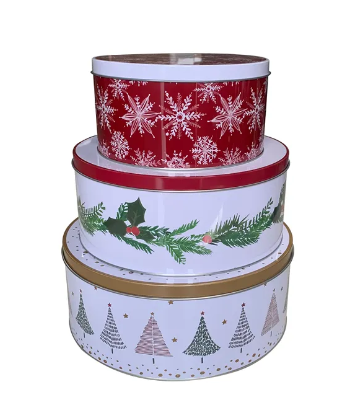Understanding Production Requirements for Custom Metal Tins
When venturing into custom tin manufacturing, one of the first and most crucial considerations is understanding minimum order quantities (MOQ). These production minimums represent the smallest number of units a manufacturer will produce in a single run, directly impacting both cost efficiency and business planning. For businesses looking to create branded packaging or specialty containers, grasping these requirements is essential for successful project execution.
Manufacturing custom tins involves complex processes, specialized equipment, and precise tooling setups. These factors contribute to why minimum order quantities exist and why they vary among different manufacturers and product specifications. Let's explore the intricate details of MOQs in custom tin production and how they affect your packaging decisions.
Key Factors Influencing Minimum Order Quantities
Production Setup and Tooling Costs
Custom tin manufacturing requires significant initial setup procedures and specialized tooling. Each unique design needs custom dies and molds, which represent substantial upfront investments. Manufacturers establish minimum order quantities to distribute these costs across a production run, making the per-unit price more reasonable for both parties.
The complexity of your tin design directly impacts these setup requirements. Simple rectangular tins with basic printing might have lower minimum order quantities compared to intricate shapes or those requiring multiple manufacturing steps. Understanding this relationship helps businesses better plan their packaging strategies and budget allocations.
Material Considerations and Efficiency
The type and gauge of metal used in tin production significantly influence minimum order quantities. Manufacturers typically purchase materials in standard quantities from their suppliers, needing to optimize usage across multiple orders. Higher-grade materials or specialized finishes might require larger minimum orders to justify the material investment and reduce waste.
Material efficiency also plays a crucial role in determining minimum order quantities. Larger production runs allow manufacturers to optimize material usage, reduce waste, and maintain consistent quality throughout the production process. This efficiency directly translates to more competitive pricing for customers who can accommodate higher order volumes.
Standard MOQ Ranges for Different Tin Types
Basic Tin Containers and Packaging
For standard tin containers with simple designs and minimal customization, minimum order quantities typically start around 1,000 to 5,000 units. These basic options often include straightforward printing and common shapes that require less specialized tooling. This range makes them accessible to small and medium-sized businesses while still maintaining production efficiency.
The finish and coating options for basic tins can affect these minimums. Standard finishes might allow for lower minimum order quantities, while special coatings or treatments might necessitate larger orders to justify the additional production steps and material costs.
Premium and Complex Custom Designs
More elaborate tin designs, featuring unique shapes, embossing, or multiple printing processes, usually carry higher minimum order quantities, often starting at 5,000 to 10,000 units. These higher minimums reflect the increased complexity in production setup and the need to amortize more substantial tooling costs.
Premium finishes, such as specialty coatings or metallic effects, may further impact minimum order quantities. Manufacturers need larger runs to maintain consistency in these advanced finishing processes and justify the specialized materials and equipment required.
Strategies for Managing Minimum Order Requirements
Planning and Forecasting
Effective inventory management starts with accurate demand forecasting. Businesses should carefully analyze their packaging needs over extended periods to align orders with minimum quantity requirements. This approach helps prevent excess inventory while ensuring consistent supply availability.
Consider seasonal fluctuations and growth projections when planning order quantities. Many businesses find success in placing larger orders less frequently, taking advantage of better pricing while managing storage requirements effectively.
Storage and Inventory Solutions
Proper storage facilities become crucial when dealing with larger minimum order quantities. Climate-controlled environments protect tin products from humidity and temperature fluctuations that could affect their quality. Implementing robust inventory tracking systems helps manage these larger quantities effectively.
Some manufacturers offer storage programs or staged delivery options for customers who meet higher minimum order quantities. These services can help businesses balance the benefits of larger orders with practical storage limitations.
Frequently Asked Questions
How do customization options affect minimum order quantities?
The level of customization directly impacts minimum order quantities. Basic customization like simple printing might maintain lower MOQs, while complex features such as custom shapes, embossing, or special finishes typically require higher minimum quantities to offset setup costs and ensure production efficiency.
Can minimum order quantities be negotiated?
While manufacturers set standard minimum order quantities based on production economics, some flexibility might be possible depending on factors such as long-term partnership potential, overall order value, and production schedule availability. However, significant reductions usually impact unit pricing.
What determines pricing breaks in relation to minimum order quantities?
Pricing tiers typically relate to production efficiency thresholds. As order quantities increase beyond the minimum requirement, manufacturers can optimize production runs, resulting in lower per-unit costs. These savings are often reflected in tiered pricing structures that reward larger orders with better rates.
How should businesses plan for lead times with minimum order quantities?
Lead times vary based on order size, complexity, and current production schedules. Larger orders meeting or exceeding minimum order quantities often require longer lead times for production and quality control. Businesses should factor these timelines into their inventory planning and reordering strategies.

 EN
EN
 AR
AR BG
BG HR
HR CS
CS DA
DA NL
NL FI
FI FR
FR DE
DE EL
EL IT
IT JA
JA KO
KO NO
NO PL
PL PT
PT RO
RO RU
RU ES
ES SV
SV CA
CA IW
IW ID
ID LV
LV LT
LT SR
SR SK
SK SL
SL UK
UK VI
VI SQ
SQ HU
HU TR
TR FA
FA MS
MS GA
GA CY
CY LA
LA